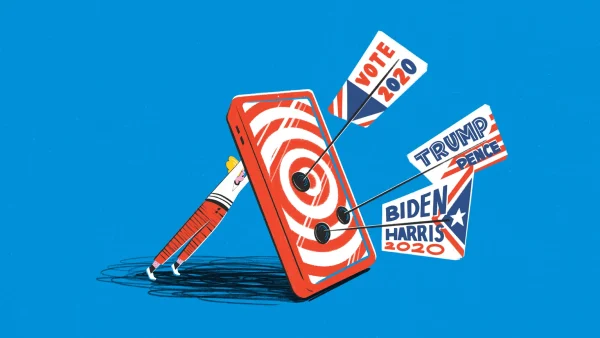Social media driven purchases fuel fast fashion

More stories from Coco Corey
Generation Z has faced some unique buying decisions never seen before. On the one hand, Gen Z is one of the most socially connected and aware generations via social media platforms such as Instagram and TikTok; on the other hand, these very same platforms promote waste and consumerism. While Gen Z has the most knowledge readily available at their fingertips when it comes to making a purchase decision, they also receive mixed messages, enticing them to embrace fast fashion in an effort to “never post in the same outfit twice.”
“Whereas Gen Z, a term used to refer to people born between 1997 and 2012, is typically thought of as socially progressive and environmentally aware, it is also a rapacious consumer of fast fashion, one of the world’s most polluting industries, often linked to human rights abuses in the global south” (Kale, 2021).
In addition, Gen Z is the first generation to experience an “Amazon Prime” mentality of having everything delivered with expected immediacy. From the onset of fast fashion in the late 1990s and early 21st century, teens in the US have grown up never having to wait long for a “trendy” item. Thus, Gen Z’s buying habits have been formed in an era where “immediate” and “disposable” are trademarks.
At the same time, this environmentally conscious generation has been altered to some degree, at least as to the egregious nature of fast fashion, yet they continue to buy it. When it comes to the world of teen fashion, fads and trends drive consumer purchases. In order to stay “trendy,” teens buy more items more frequently and at lower price points. Teens spend more on clothing than any other category (22 Fascinating Teenage Spending Statistics That Need to Know in 2021, n.d.). In fact, Americans buy a piece of clothing every five days, on average, and we pay so little for our garments that we’ve come to think of them as disposable. According to a McKinsey study, for every five new garments produced each year, three garments are disposed of” (Remy et al., 2016).
While Gen Z has the most knowledge readily available at their fingertips when it comes to making a purchase decision, they also receive mixed messages, enticing them to embrace fast fashion in an effort to “never post in the same outfit twice.”
The mentality of Gen Z is very different when it comes to clothing purchases. Driven by social media influencers (the surveyed individuals in this research were ages 2-6 years of age when Instagram was launched) who are never seen in an outfit twice and who make money showing their clothing “hauls” on TikTok, clothing is no longer seen as an investment (unless its designer) and is instead considered disposable. “Young people, and young women, in particular, came to feel an unspoken obligation not to repeat an #outfitoftheday; according to a 2017 poll, 41 percent of women ages 18 to 25 felt pressure to wear a different outfit every time they went out” (Monroe, 2021).
Cognitive dissonance may be the psychological process reasoning why if a consumer knows something bad about a brand, they will still purchase from them. “When consumers’ behavior is inconsistent with their thoughts about a retailer, they will experience cognitive dissonance. The theory of cognitive dissonance (Festinger, 1957) explains that, when there is a discrepancy between thoughts and actions, individuals will feel emotional discomfort until balance is restored. Following this reasoning, if young adults, who want to purchase products from ethical companies, are purchasing clothing from FFRs, then they need to believe that these retailers are behaving ethically to avoid cognitive dissonance” (Yurchisin & Cook, 2016).
There is a disconnect in the buying habits of Gen Z when it comes to fast fashion purchases. Despite the clear facts regarding human rights violations along the fast fashion supply chain, and the interest in social awareness of Gen Z, fast fashion purchases continue to rise. Without social media campaigns targeting Gen Z, specific evidence states that they are either ignorant to the harms or a psychological cognitive dissonance happening when it comes to purchasing decisions.

Coco Corey is a senior entering her second year writing for The Central Trend. Coco plays on the tennis team, and she is also one of the four student section...






























































































